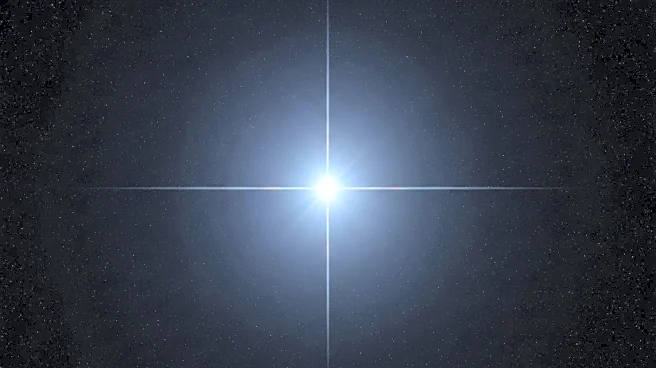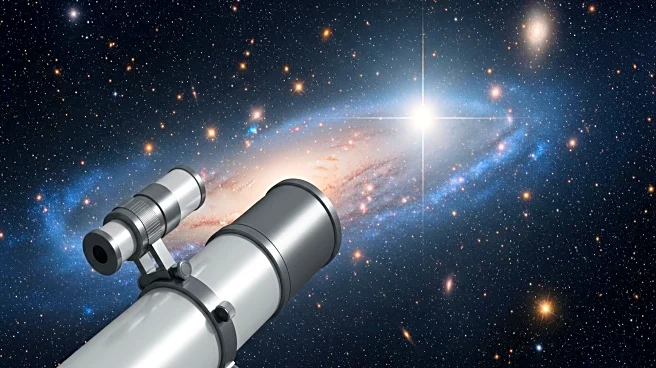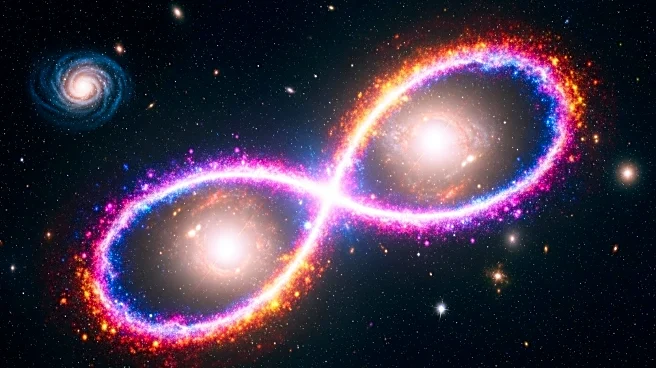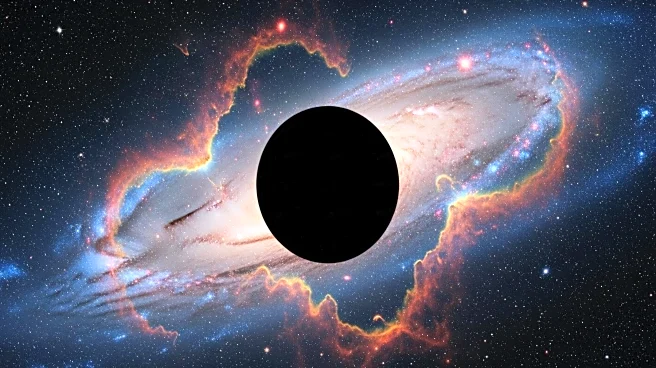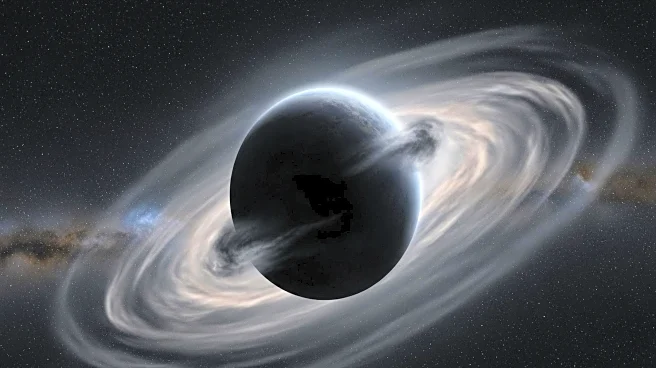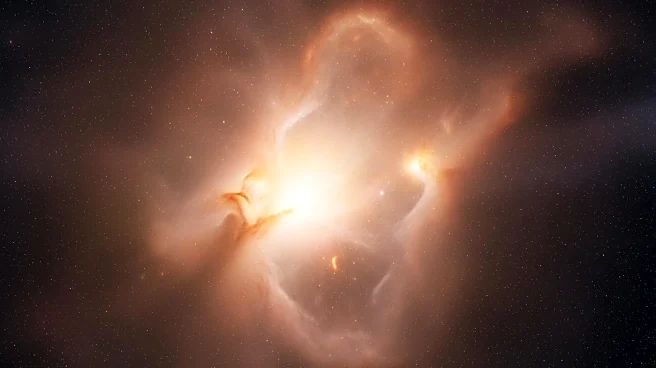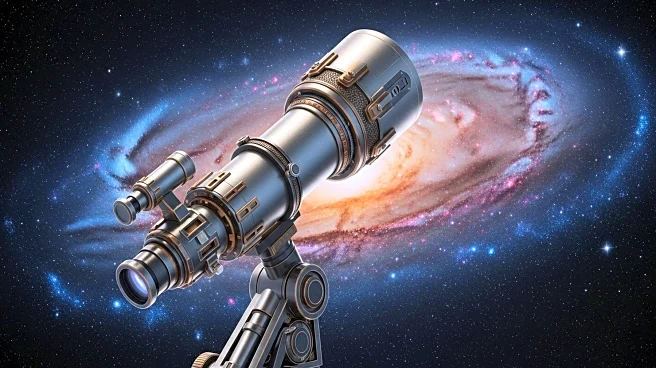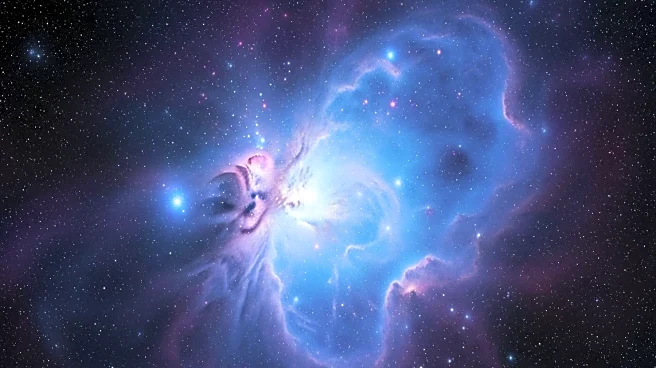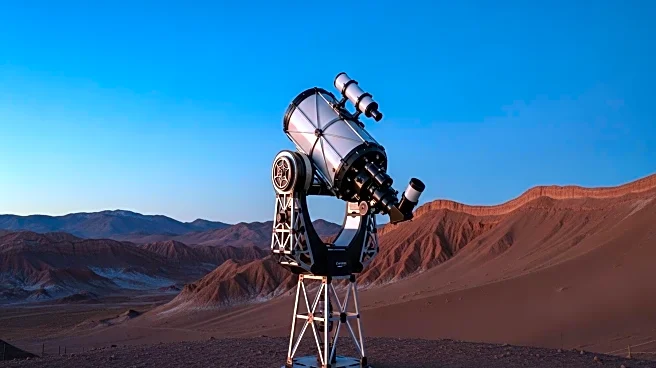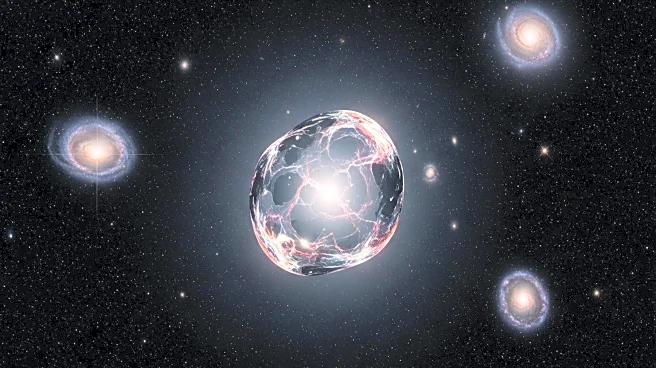What's Happening?
Astronomers have discovered a star in the Large Magellanic Cloud that is remarkably unpolluted by heavier elements, suggesting it is a descendant of the universe's earliest stars. The star, named SDSS J0715-7334, has the lowest total amount of metals, meaning elements other than hydrogen or helium, in the known universe. It is located in a satellite galaxy of the Milky Way and has a metal content of about 0.8 parts per million, which is significantly less than our sun. This discovery provides insights into the formation and evolution of stars in the early universe.
Why It's Important?
The discovery of SDSS J0715-7334 is crucial for understanding the early universe and the formation of stars. It offers a rare glimpse into the conditions that existed shortly after the big bang, providing valuable information about the composition and evolution of the first stars. This finding could help astronomers refine models of star formation and the distribution of elements in the universe. Additionally, it raises questions about the cooling mechanisms of gas in different environments, potentially leading to new theories about the development of galaxies.
What's Next?
Further research is needed to explore the implications of this discovery and to understand the cooling processes that allowed the formation of SDSS J0715-7334. Astronomers may conduct additional observations to identify other near-pristine stars and compare their characteristics. This could lead to a deeper understanding of the diversity of star formation processes across different regions of the universe. The study of such stars may also contribute to the development of new technologies and methods for observing distant celestial objects.
Beyond the Headlines
The discovery of SDSS J0715-7334 challenges existing theories about star formation and the role of heavy elements in cooling gas clouds. It suggests that different environments in the universe may have unique cooling mechanisms, which could have implications for the study of galaxy formation and evolution. This finding may also inspire new research into the chemical composition of stars and the processes that govern their development, potentially leading to breakthroughs in astrophysics and cosmology.

